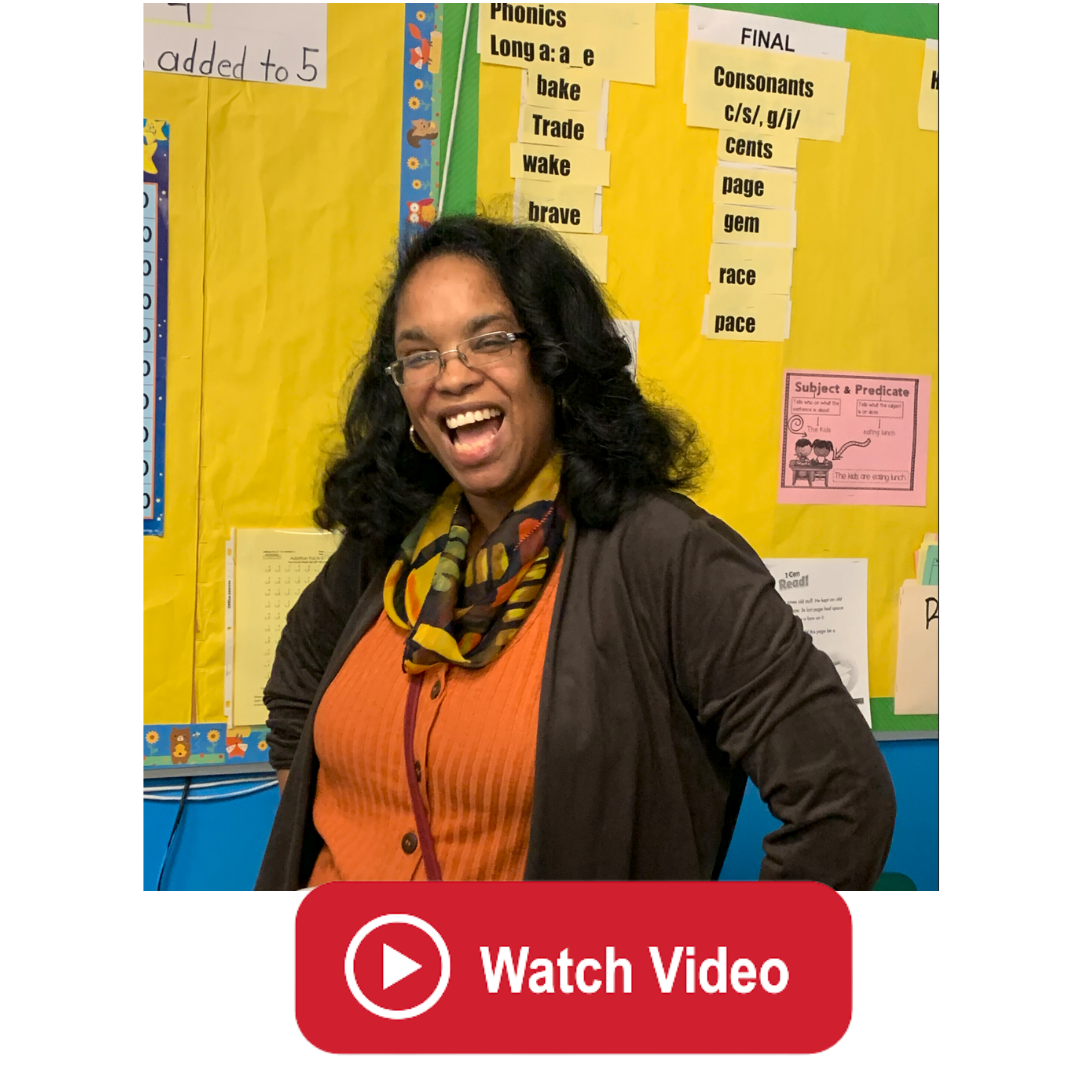16 Teacher-Created Review Games That Improve Learning in the Arts, Physical Education & World Languages
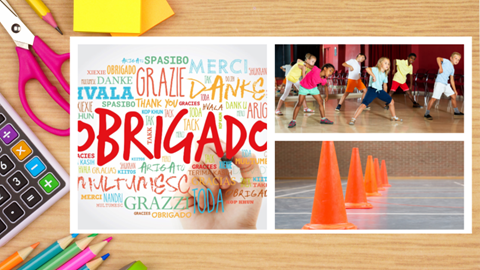
Let's face it; everyone loves to win. Everyone also enjoys fun. So why not introduce those two elements into the classroom experience with games? The magic of games in learning comes from their ability to engage, challenge, and reinforce previously taught skills and content. For this reason, they cannot be dismissed as time-wasting diversions from precious learning time. Games are not just about fun; they help teachers build connections between the rigors of learning and the satisfaction of achievement, while also reducing forgetting.
Teachers put countless hours into preparing classroom lessons and teaching new concepts. So how is it that weeks later, student assessment results demonstrate little evidence that anything has been taught? That's because students forget. For students to excel on assessments weeks or months removed from the lesson, it's important that teachers shift from short-term memory tactics and find ways to make what they teach stick. In addition to preparing well-planned engaging lessons, teachers must also consistently invest time into strengthening students’ information recall ability. Games can help with this.
With gamified learning, teachers revisit key concepts with students in a fun and interactive way and tap into students’ memory banks. A recent cohort of Rutgers Alternate Route teachers designed low-tech classroom games aimed at stimulating student memory retention. These games use exciting and entertaining review formats to encourage information recall. Free for all to access, these games come with instructions and images for easy adaptation for all subjects and grade levels.
Read on below to browse each teacher-designed game and access instructions.
Performing and Visual Arts
Ceramic Stop
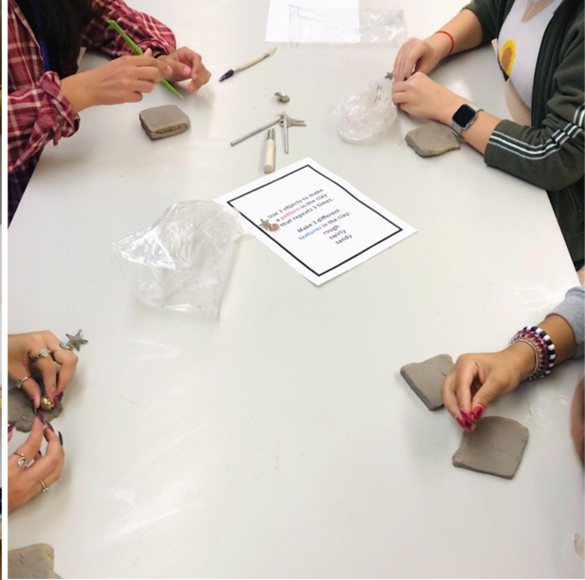
Ceramic Stop by Art teacher Paula Bertran is a fun and engaging ceramics review game that reinforces knowledge of clay basics and techniques while helping students develop skills in teamwork and time management.
Game Objective & Instructions
The game involves up to 5 teams, each working together to complete a challenge related to clay basics, procedures, vocabulary, and techniques learned in previous ceramic projects. Challenges can range from building to answering questions on concepts and ideas students have learned about ceramic art. The teams have a limited time of 2 minutes to complete each challenge. The game consists of 5 different stations, and after the 2-minute timer runs out, all teams switch stations and move clockwise to the next challenge. This rotation allows each team to tackle various challenges. When the timer goes off, the teacher checks each station and awards a point to any team that completes the challenge correctly. The challenges require practical application and understanding of ceramics concepts and allow students to recall and share their acquired knowledge, which enhances learning through repetition and review.
Rhythm Bingo
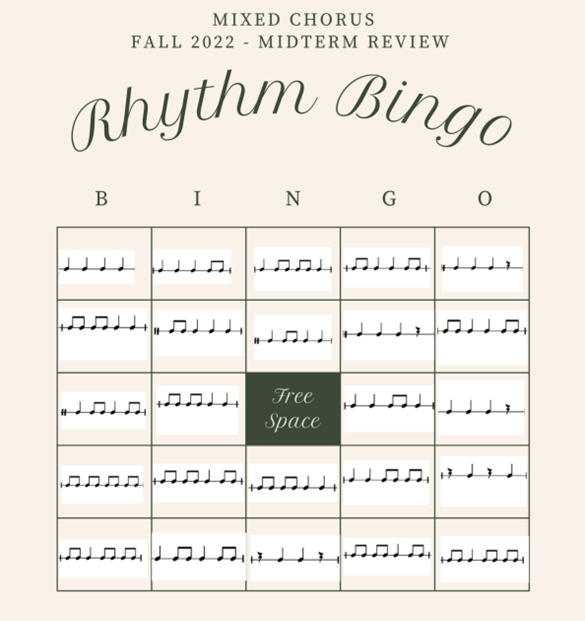
Are your students ready to put their rhythm skills to the test? Get ready for an exciting game of Rhythm Bingo created by Music teacher Maddie Meier. This game is designed to help students demonstrate their understanding of musical rhythms while having a blast.
"
Game Objective & Instructions
The objective is to identify correct rhythms in musical phrases, connect aural rhythm to written rhythm, demonstrate different rhythmic values, and relate music to various mathematical structures. After previous practice identifying, listening to, repeating, and performing rhythm, as well as making connections between reading and playing rhythmic patterns, students will be ready to play. Each student receives a BINGO board with different rhythm combinations. They will use small pieces of paper to cover the spaces on the board. The teacher will randomly draw and demonstrate various rhythms. Students must find and cover the corresponding rhythm on their BINGO board. The first to cover five spaces in a row calls out BINGO and receives a small prize.
Blooket Art Game
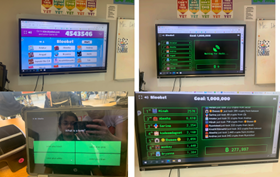
Knowing art-related vocabulary terms is essential for describing assignments and participating in critique. To reinforce learned art vocabulary words, teachers can use Blooket, an exciting and interactive review game contributed by art teacher Julia Deruv.
Game Objective & Instructions
To get started, the instructor creates a set of multiple-choice questions on the Blooket website based on previously learned art vocabulary terms and definitions. Students can log on to the Blooket website using their Chromebooks and enter the code provided by the instructor to join the game. The game is played in "crypto hack" mode, where students answer questions to earn crypto and have the chance to "hack" others to steal and bank their crypto. The first student to bank 1,000,000 crypto wins a prize from the treasure box. The game format of written quizzes and multiple-choice questions can benefit students who struggle with visual or oral learning, helping them retain information effectively.
7 Elements of Art Taboo Review Games

Understanding the seven elements of art can foster better analysis and appreciation of art, while enhancing student artistic skills, general creativity and personal development. When Art teacher Melissa Powell was looking for a way to help her students demonstrate their understanding of the seven elements of art while making it enjoyable for them, she created the 7 Elements of Art Taboo Review game.
Game Objective & Instructions
The class works together as a team, and the teacher keeps track of points on the board. A word bank with concepts related to the elements of art is displayed on the board, and a student picks a word from a bowl. Without using words or pointing to the word bank, the student uses actions or gestures to help their team guess the word they picked – similar to the game of charades. Each correctly guessed word earns a point for the class. A timer is set for 2 minutes for each turn. The teacher can modify the word bank for use in different topics and assessments. This activity is a great way for students to work together and demonstrate their learning while having fun.
Digital Color Rush
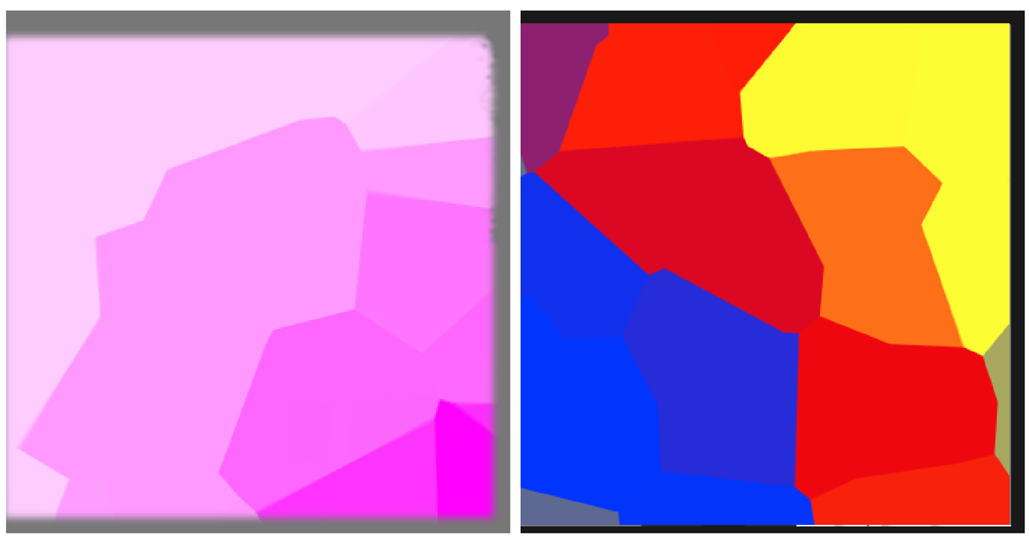
Digital Color Rush is a game art teacher Alea Qira plays with students in her high school digital arts class to practice their color-matching skills while reviewing content related to color theory, color systems, color relationships, and color psychology.
Game Objective & Instructions
For the game students are divided into groups of 2-3 students. Each round, the students take turns controlling the computer. The game involves projecting a color on screen, and the teams have to match that color using colors given to them. After matching the color, the teams will either identify the hue, create a color palette based on a given color relationship, or demonstrate the psychology behind the color. The first group to finish receives 2 points, while the other groups receive 1 point. If time runs out, no points are awarded. Each round lasts for 5 minutes, with 2 minutes for the first part, a 1-minute break, and 2 minutes for the second part. The group with the most points by the end of the class wins. The winning team also receives an additional 1 point of extra credit redeemable for their next quiz.
Dance Jeopardy
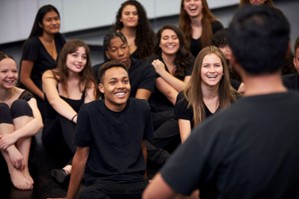
Most people don’t think about dance and trivia at the same time. But when they're playing Dance Jeopardy, a game created by dance teacher Shakira Washington, it’s a must. The game helps Shakira’s high school dance students recall important course content before a test and match the names of various movements with the corresponding dance terms. An additional benefit of the game is that it encourages teamwork among students who may not always like to work in groups with peers while adding an element of fun to learning.
Game Objective & Instructions
Here’s how the game is played. The teacher develops a set of questions based on vocabulary and concepts from past lessons. Students will break into four groups and pick a group name, a writer, and a dancer. The writer will write every answer down on a sheet of paper as questions are projected onto a screen, and the dancer will use their body to show the movement that matches each vocabulary word. Each group answers every question, and when a group picks a category and specific point amount, every group is given 3 seconds to discuss and write their answer. Then each group gets 10 seconds to complete each movement. This game gives multiple students in each group a job, allowing students to be in control of their own participation that day. Each question requires a different movement that was previously introduced during the course, and students have to work together to match the step to the vocabulary word.
Dance Freeze
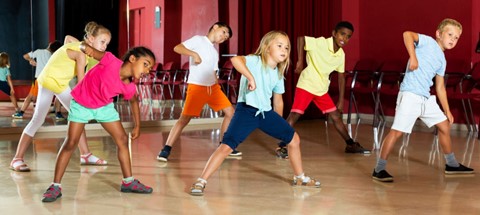
Dance Freeze may not be original, but the way dance teacher Samantha Panek uses the game with her students certainly is. Samantha repurposed the game so that students of any grade level can review and practice dancing skills while developing and refining their gross motor skills. The game is played with the whole class, and the objective is for students to recall all the movements they have learned throughout the year in dance class.
Game Objective & Instructions
To play the game, the teacher first reviews the movements, writing them on the board as students say them. Once the review is complete, the freeze dance competition begins. The teacher randomly calls out a specific movement from the board that students need to embody. The teacher plays music as students act out the movements. When the teacher stops the music, students must freeze or hold the called-out pose. Students who cannot freeze in the required pose when the music stops sit out until the next round. From there, the teacher calls out the next movement from the board and the game continues through the final round. In the last round, the remaining students get to pick the movements they want to do from the board, using the round to out-freeze their competitor in order to win the game.
World Languages
Spanish Alpha Word
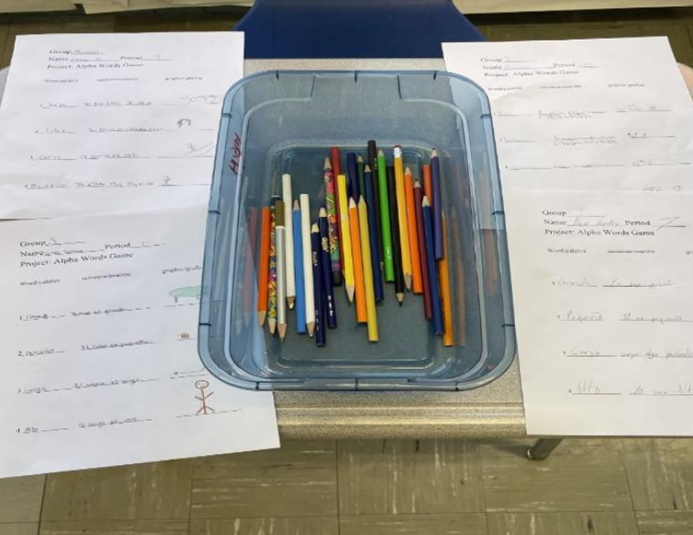
Learning a world language is important for students because it promotes cultural understanding, helps break barriers, enhances career opportunities, and provides personal and academic benefits. To help his students learn Spanish, world language teacher Rolando Hernadez created the Spanish Alpha Word game. This interactive and engaging game is designed to help students expand their vocabulary and improve their second language acquisition skills. The game, which can be used in any world language class, involves identifying, reinforcing, and expanding Spanish vocabulary; applying vocabulary learned in assignments; and fluently pronouncing learned Spanish words.
Game Objective & Instructions
To play the game, the teacher creates a word bank with items related to students in grades 9-12. For example, the word bank might include terms linked to topics like greetings, days of the week, professions, people and county, and describing others. The teacher reviews vocabulary related to the unit before starting the game. Four students form a group with five groups in total. Each group must write a sentence and illustrate the meaning of a chosen word from the word bank. The group with the most accurate descriptions and word applications wins.
¡Peligro!
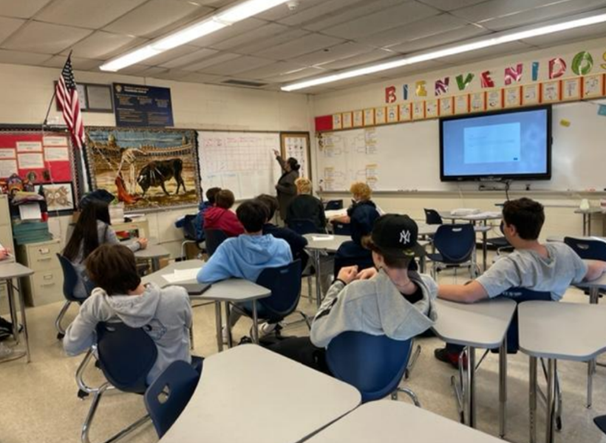
¡Peligro! by Emine Ortega is a game designed to test students' recall knowledge of Spanish terms related to entertainment. While the game can be used to reinforce any concepts learned in world language classes, Emine developed the game to help her Spanish students explore the importance of entertainment in shaping individuals and society, and how culture influences self-expression.
Game Objective & Instructions
Students play in groups and answer questions from different categories with varying difficulty levels. The students can earn points based on the difficulty of the questions they answer, and if a group cannot answer a question, another group can try to steal the points by answering it correctly. The game also includes a drawing activity for a visual representation of vocabulary terms. To play the game, the teacher creates 7 categories or topics with 5 questions each ranging in difficulty from easy to hard. The teacher writes the 7 categories and 5 questions on the whiteboard or blackboard in a chart form, with the number of points corresponding to the level of difficulty. The students are divided into groups of 4 when possible, and they pick a name. The teacher hands out newsprint paper and markers to the groups that will be needed to draw the vocabulary in Category #5.
JEVIL
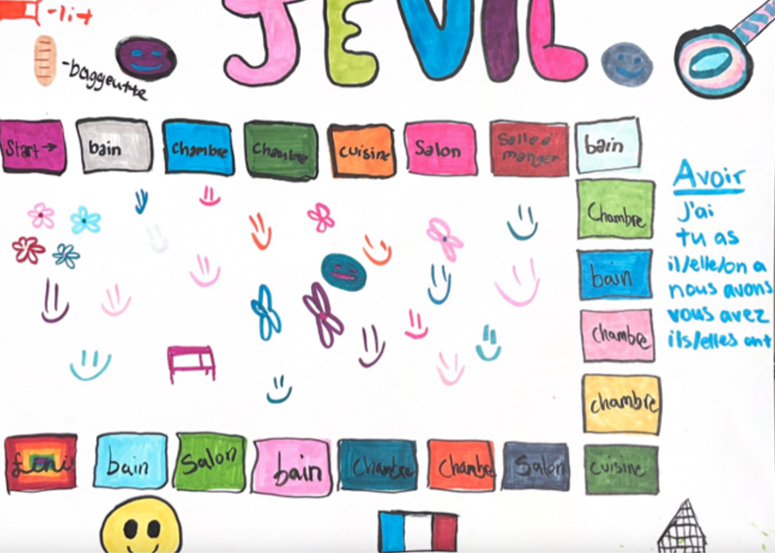
Jevil, a game constructed by students in French teachers Samantha Carrington, is designed to review vocabulary related to rooms in a home. Intended for 2 or more players, the game's name comes from the first initials of the student-creators, and its objective is to reach the end of a path, similar to Candyland.
Game Objective & Instructions
To set up the game, place the cards in the middle and put the pawns at the starting point. The game includes vocabulary content related to different rooms in a home, such as chambre bedroom, bain bathroom, salon living room, cuisine kitchen, and salle à manger dining room. Each card has either 1 colored square, 2 colored squares, or an image indicating an action to take on your turn. The game involves taking turns drawing a card and moving to the nearest corresponding colored space on the board. After a student takes a turn, they should place the used card in a separate discard pile.
It is recommended to make the game more challenging by incorporating basic descriptions of what's in each room. Students could also work on scripting how to give instructions during the game, such as "pick a card" or "skip a turn." Completing such tasks in French will reinforce writing, reading, and oral expression skills.
Submarino: Spanish Verb Conjugation Game (High School Spanish)
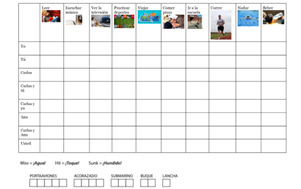
Introducing the game Submarino by Spanish teacher Maria Orgeria! Get ready to dive into an exciting adventure where the objective is for students to sink their enemy's fleet before their enemy sinks theirs. As they engage in an epic Submarino battle, they sharpen their verb conjugation skills and strengthen their Spanish vocabulary.
Game Objective & Instructions
To set up the game, each student receives a "Submarino" game sheet. The student positions their five ships, including the "Portaaviones," "Acorazado," "Submarino," "Buque," and "Lancha," on the "Mi Flota" ocean grid. The student makes sure to place them either horizontally or vertically, following the rules and ensuring that the ships do not overlap, run diagonally, or go off the grid. Once the ships are set, they remain fixed in their positions throughout the game.
The game is played in turns. Each student takes a turn "firing" on their opponent's ocean grid by correctly conjugating a subject/verb combination to identify the grid square to be fired upon. After each shot, the opponent announces whether it's a miss, "¡Agua!" or a hit, "¡Herido!" If the shot hits the last square of a ship, the student must also announce that the ship has been sunk, "¡Hundido!"
The student keeps track of their opponent's hits on the "El Enemigo" grid by marking them with an X for a miss and filling in a hit. If the student incorrectly conjugates a verb, their shot is invalid, and the opponent will say "incorrecto." There is no second chance for that shot, so the student must make sure to conjugate accurately. The game continues until one student sinks all of their opponent's ships. The first student to achieve this will be the winner of the game.
Submarino offers some variations to make the game even more exciting. Players can choose to say complete sentences instead of just verb conjugations when firing. Additionally, they can vary the number of ships to change the length of the game. The game can also be played with any tense or mood, allowing for more advanced practice. For visual learners, pictures can be added to help with vocabulary, or players can even add their own verbs from a vocabulary list.
Physical Education
Battleship Volleyball

Physical Education is important in schools because it promotes physical activity, improves academic performance, and develops teamwork and sportsmanship while improving student fitness and mental health. That’s why Physical Education teacher Justin Meeth creates fun ways to help his students enjoy his PE Class. One fun activity he introduced to his students is Battleship Volleyball, Battleship Volleyball, a game that aims to help students identify rules, regulations, and skill cues for a standard volleyball game.
Game Objective & Instructions
The game is played by dividing students into two even teams and arranging them on each side of the net in a volleyball formation. Each team places 8 hula hoops within the volleyball court boundaries as their "battleship." Only 8 team members can be on the court at a time, and they must rotate correctly during the game. This means setting up in the correct game positions after each possession. The game involves taking turns answering questions related to standard volleyball, and if a team answers correctly, they get a chance to "sink" a ship by serving the volleyball overhand or underhand from the serving position. If a team answers incorrectly, the other team gets a chance to answer the question and sink a ship. The team with the most sunken ships at the end of the game wins.
Dunk It
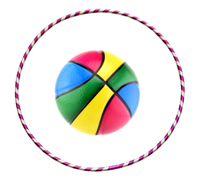
Physical Education teacher Ava Ruggier lets students lean into their inner basketball stars when she invites them to play a game of Dunk It during her gym class. The game helps students recall the rules and concepts of various sports, recite critical elements, explain different types of exercise movements, identify factors in developing a workout plan, and understand how points are scored in different games. The game also allows for students to be physically active during class time and develop and enhance team-building skills.
Game Objective & Instructions
To play the game, teachers need a hula hoop, a foam ball, and a set of questions based on previously learned materials. At the start of the game, students are divided into three teams and line up in the gym in front of a hula hoop representing the basket. The teacher asks questions, and the first student to raise their hand and answer correctly gets two opportunities to shoot a foam ball into the basket represented by a hula hoop. After the first person of each team competes, they move to the back of the line so the next player on the team can go. Teams accumulate points with each basket they score. '
Physical Education Jeopardy

Physical Education teacher Roy Muriel may not be on television, but he sure has game show host appeal in the eyes of his students. He manages to keep them excitedly tuned into learning when he announces it’s time to play Physical Education Jeopardy, a game he uses to review knowledge of sports rules and general fitness and mental health. Topics in his question set range from Basketball 101, Speedball 101, and Floor Hockey 101 to Fitness/Strength Training and Social Emotional Learning (SEL). The game encourages full class participation and engagement, while also promoting peer learning and team building.
Game Objective & Instructions
The game is played in teams, and each team must select a captain who will be in charge of the buzzer and will be the spokesperson. The game is similar to the televised version, with answers presented on the game board, and contestants responding with questions. There are six categories, and under each column are five clues, increasing in value and difficulty. A correct response earns the point value of the clue and the opportunity to select the next clue from the board. An incorrect response or a failure to ring in within the time limit deducts the point value of the clue from the team's score and gives any remaining opponent(s) the opportunity to ring in and respond. If none of the contestants gives a correct response, the host reads the correct response, and the contestant who has most recently given a correct response to a previous answer chooses the next answer. In the final Jeopardy, a category is announced by the host, and the teams will each agree on and write down a point value, based on the category, of as little as 0 points or up to as many points as they have accumulated. The contestants have 30 seconds to write a response, again phrased in the form of a question. The team with the most points wins.
Race Track Drivers Education
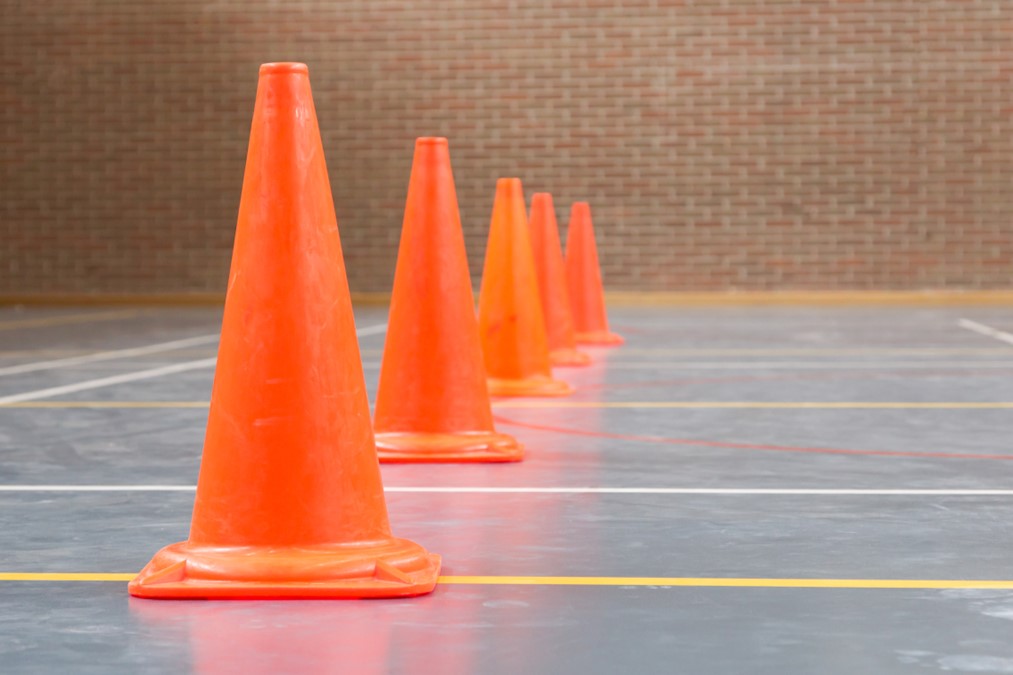
High school students in Joseph Lima’s class get to rev their brains and their imaginary engines while playing the Race Track Driver Education Game he designed. The point of the game is simple–help students learn about driving rules and regulations. Students emerge from the experience with the knowledge and skills needed to drive safely and responsibly and with heightened enthusiasm from all the enjoyment the game brings.
Game Objective & Instructions
This game needs 5-7 stations represented by cones, a corresponding number of student station attendants, a set of questions or challenges for students to answer, and devices like Wi-Fi-connected laptop computers for students to perform online research if needed. The game is played in teams, with each team having an equal number of students. Teams advance or drive through the racetrack by answering questions correctly. The racetrack is marked with stations, and each station is assigned a station attendant who will ask the questions. The game starts by having each team line up at the starting line. The station attendant at the first station asks a question to the first team. Questions can range from topics from rules, to signs, and topics students have covered in class regarding driver education. Each team must write down their answer on paper and present it to the station attendant before advancing. If the answer is correct, the team can move or drive to the next station. If the answer is incorrect, the team must pull over to the shoulder and conduct research using laptops or other devices to find the correct answer. The game continues until one team successfully reaches the finish line. The first team to reach the finish line wins. Reward the winning team with 5 bonus points on their next exam.
Musical Scarves

Nathan Piserchia's Musical Scarves game is another great example of how students love physical education. A twist on Musical Chairs, Nathan’s game uses scarves and requires students to coordinate their retrieval of a scarf with the pauses in the music. The game focuses on following directions, picking up objects, and putting objects down, all while incorporating these skills in a fun and adaptive way. Nathan plays this with his students of various age groups, including kindergarten, elementary school, middle school, high school, and transition classrooms for 18-21-year-olds.
Game Objective & Instructions
This game needs enough scarves or bandanas for each student in the class and a speaker to amplify music during the game. To play, students start by standing next to one of the scarves which should be arranged in a circle on the gym floor. When the music plays, students walk/run around the circle of scarves clockwise. When the music stops, students pick up one of the scarves, hold it in the air, and wait. The teacher must look around to identify students who weren’t able to retrieve a scarf. Students without scarves leave the game, and the teacher removes one scarf from the circle. When the music starts again, students put their scarves back on the floor and continue walking around the circle. The game continues until there is only one student left. The last player with a scarf wins the game.
If you’re considering following your dream of teaching, Rutgers Alternate Route can offer you the support and training you need to succeed. Be sure to follow Rutgers Alternate Route on Twitter or sign up for Alternate Route’s monthly newsletter for more information and stories from the field of education.

 DeMariah Woodard is an undergraduate student at Niagara University where she is a double major in Psychology and Criminal Justice. She supports content creation initiatives with Black Star Communications as a Digital Communications Intern for Summer 2023. Published works by DeMariah are completed in collaboration with the Rutgers Alternate Route Team and Black Star Communications.
DeMariah Woodard is an undergraduate student at Niagara University where she is a double major in Psychology and Criminal Justice. She supports content creation initiatives with Black Star Communications as a Digital Communications Intern for Summer 2023. Published works by DeMariah are completed in collaboration with the Rutgers Alternate Route Team and Black Star Communications.